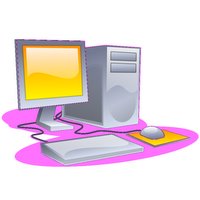 Are medical records still in dark ages?
Are medical records still in dark ages?Medical Informatics Insider writes that hospitals are still in the dark ages when it comes to record keeping in paper format. This does not apply to all hospitals though. Martin C. Harris, who is a CIO (chief informatics officer) at the Cleveland Clinic, admitted that when the hurricanes hit Florida offices of the Clinic last summer, no medical records were lost. They had already been safely stored in electronic format on the servers in Cleveland, Ohio.
"Inefficient" electronic medical records (EMR)
Graham is a medical student who shares his frustration with the current use of IT in medicine in his post Health IT: This Is The Best We've Got?:
"My frustration continues to grow and grow the more I work and work. I find it extraordinarily hard to believe that with all the great minds in computers and medicine, we don'’t have a system that makes practicing medicine quicker and error proof. Even at the VA, a hospital system that has arguably the best computerized medical record, things are incredibly inefficient."
Electronic medical records can be very useful
In my comment to Graham's post, I noted that most of the fixes for the problems he listed are already available.
The Cleveland Clinic uses EpicCare which is popular software for EMR. Admission notes and progress notes can be done electronically and the system automatically pulls out vital signs, laboratory results, medications lists, etc. and puts them in the note.
I did my residency at Case/St. Vincent and the nurses there used to record their assessment (interval history, vitals, physical exam) in the computer system. When the residents round in the morning, they can see everything that happened since they left the hospital the previous day. The electronic assessment is so comprehensive that we used to joke that you do not actually have to see the patient because everything is recorded in the computer. Do not take this as advice though, of course, you HAVE to SEE the real patient.
Both hospitals given as examples have computer terminals in patients rooms (portable or stationary).
I also used to use a progress note template (printed on paper) that you just fill out and then put in the chart.
Check out these Sample Admission Notes for the Most Common Conditions. They can be used as paper templates or saved in the computer system and completed electronically.
References:
EMR, the new threat to your medical privacy. ConsumerReports.org
EHRs Fix Everything - and Nine Other Myths. Family Practice Management, 2007.
How Clinical IT is Transforming Hospital Care – For Better and Worse. Wachter's World, 01/2008.
An Introduction to Personal Health Records. American Academy of Family Physicians, 2006.
Image source: Wikipedia
Related:
EMR (Epic) primer: Our Most Expensive Typing Pool. Dr. Wes, 09/2008.
Updated: 09/04/2008
No comments:
Post a Comment
Note: Only a member of this blog may post a comment.